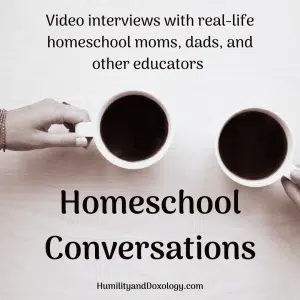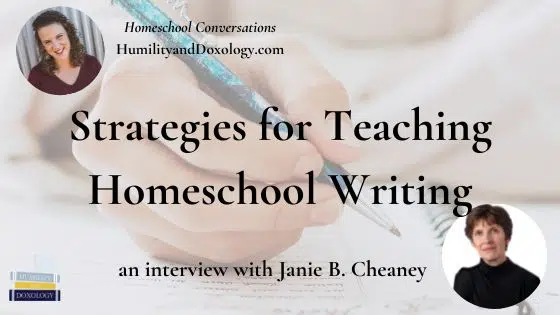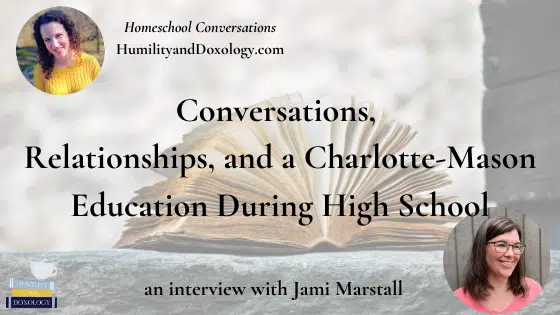Have you wondered how to teach writing effectively in your homeschool? There’s essay writing and creative writing and grammar and sentence structure and… ohmy! Where to start? Which writing activities for kids have the greatest impact? Fiction author, homeschool writing curriculum author, and speaker Janie B. Cheaney is here to share her experience as both a writer and teacher. This Homeschool Conversations episode is sure to encourage and equip you as you teach your own children how to write.
Be sure to check out all the other interviews in our Homeschool Conversations series!
Watch the video. Listen to the podcast. Read the show notes. Share with your friends!
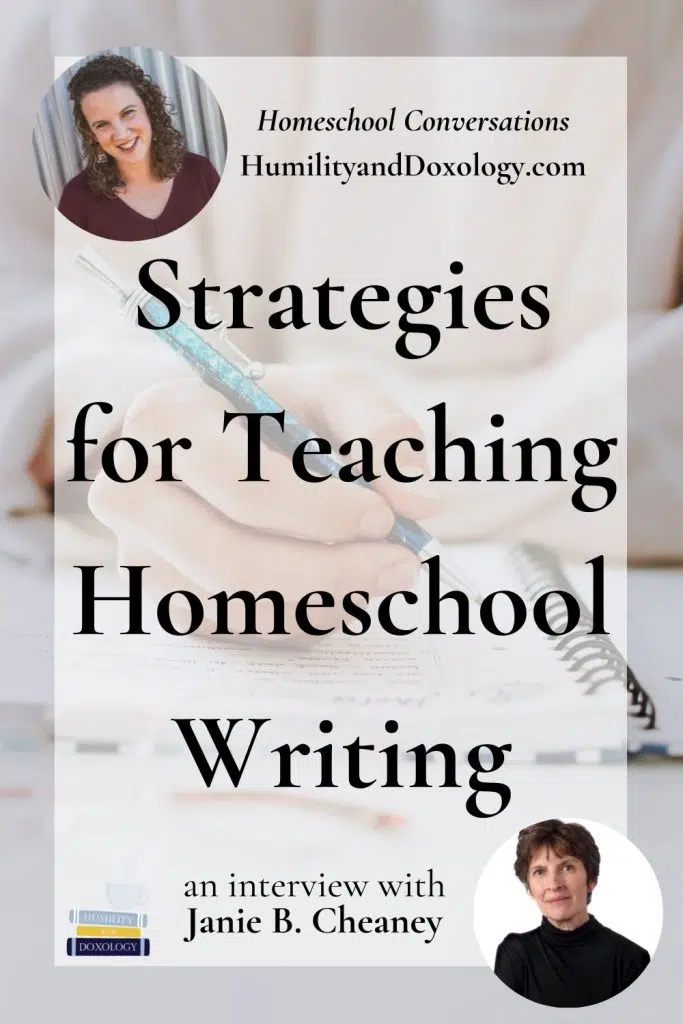
{This post contains paid links. Please see disclaimer.}
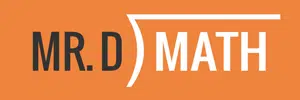
Who is Janie Cheaney?
Janie Cheaney began homeschooling in 1985 and graduated her second and last child in 1996. She is the author of the Wordsmith creative writing series and has published six novels for children. Since 2008 she has written a regular column in WORLD magazine and comments regularly on WORLD radio. She and her husband live in Missouri. Today, she shares ideas and inspiration as well as reluctant writer tips to help us teach writing in our homeschools.
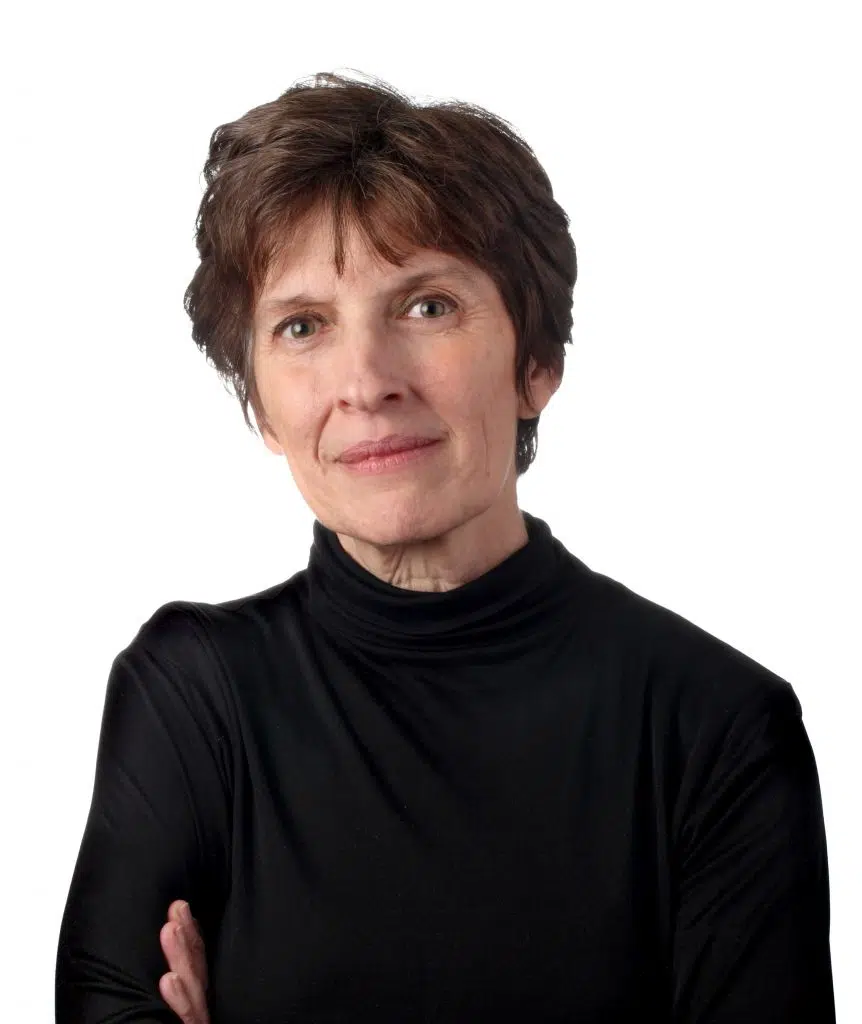
Watch my Homeschool Conversation with Janie Cheaney
Prefer to listen to your content? Subscribe to Homeschool Conversations on Apple podcasts or wherever you get your podcasts so you don’t miss a single episode!
Amy: Hello, friends. Today I am joined by Janie Cheaney. She began homeschooling in 1985 and graduated her second and last child in 1996. Janie is the author of the Wordsmith: Creative Writing series and has published six novels for children. Since 2008, she has written a regular column in World Magazine and comments regularly on World Radio. She and her husband live in Missouri. I am just so delighted to get to chat with you today. Janie, would you begin by telling us a little bit about yourself and your family and how you originally got started homeschooling?
Janie Cheaney: Okay, Amy. Well, thank you for inviting me. I have two children. My husband and I married in 1971, so we celebrated our 50th wedding anniversary last year. Our children are grown. One lives in Pennsylvania and the other lives in the Las Vegas area. They both graduated from homeschool, but we didn’t start with homeschool. That was in 1984, which sounds like a very ominous year, doesn’t it? That was the year that I became convicted that I needed to have my children home. They hadn’t been in school very long. My daughter was in third grade. My son was in first grade, and for the first time, they were in school all day long.
I wasn’t expecting this, but surprisingly, I missed them. I missed having them at home. I also felt like they had just been removed from my influence. As soon as they got home from school, they wanted to run right out and play with their friends, or they wanted to do something else. I felt like our relationship was broken. Around that time, I was listening to Dr. Dobson, and he used to have Dr. Raymond Moore on his program a lot. Raymond Moore and his wife, Dorothy, were homeschool pioneers. I don’t think they started that way but more and more they became drawn to the homeschooling model.
They were promoting several books on homeschooling. I bought one of those books and that was it. That did it for me. I was convicted to homeschool right after the holiday break, the Christmas break. In 1983, I took them out of school and we started homeschooling in January. It was a little difficult at first just because they had been in school for– my daughter had been in school for four years, and it was difficult for them to see me as a teacher. That was probably the biggest challenge. I was mom. I wasn’t their teacher. I wasn’t smart enough to be their teacher, but we got over that hurdle.
It took a little while. It took some adjustment, but we got over that and I’ve never regretted it. I don’t think they regretted either. My daughter is homeschooling. She always has. She’s in classical conversations, and she’s been a director and a tutor. My son, their one child has been in and out of school with the pandemic and all. Right now, they’re leaning toward a Christian school, but that’s their decision. They’ll get there. As I said, we never regretted it. We were going to homeschool for maybe two or three years just to get the kids on a firm footing, but we ended up going all the way through high school.

Amy: It’s really interesting when I speak to moms from different generations of homeschooling. My own mom, my mother-in-law, like you, were homeschooling in the ’80s and the ’90s and so many of their peers. I remember growing up hearing so many people would point to that interview with Dr. Raymond Moore on Focus on the Family, and a lot of people that really inspired them.
That first initial generation of homeschool pioneers, and my fellow mamas and I, are standing on the shoulders of all those who went before and homeschooled without the internet in so many ways when there weren’t curriculum just around every corner. I’m very thankful for those of you who made it so much easier for us now. It’s really fun how often that that interview comes up when I talk to other moms.
One of the things mentioned in your intro, of course, is that you have both written a curriculum about creative writing, you’ve written novels yourself. I was just curious your own experience with stories growing up. Was that always something you were captivated by, were you reading and writing as a child, or how did that grow and develop over the years as you grew older and as you were homeschooling, and then now in your current life?
Books and Creative Writing
Janie: I grew up reading stories. I loved to read. I was pretty mathematically challenged. I started reading at a pretty early age. I was a shy, withdrawn child, so my friends were books. I made friends with books. I didn’t really want to be a writer. I wrote well. I certainly wrote well enough, but that was not my ambition. I would start stories, and I wouldn’t know how to finish them. It was frustrating to me. I didn’t think about writing much.
I wanted to be in the theater. I was more of an actor. I enjoyed playing parts and didn’t– It was funny. I was very shy in real life, but on the stage, I did not mind getting up and playing another part, playing somebody besides myself. That was interesting. I didn’t realize until later, when I finally got around to it in my 20s, that writing fiction was very much like performing a play in my head, and I got to play all the characters.
There’s a stronger connection between those two than you would think. As far as stories go, I would imagine myself to be different characters, or if there was a story that I really liked, a book that I just loved, I might try to imagine myself as a character in the book or even make up a character. I did that with movies too. If there was a movie that just really appealed to me, I would imagine myself as a character in the movie.
I suppose I had the makings of a writer even as a child, but it took me a while to learn how to do it. I had this idea that authors just had great imaginations and they just made up stuff out of their heads, made up fabulous stories. That’s not how writers work. I like to tell young writers and children that all aspiring writers have the same thing. They all start with the same thing, and that is personal experience.
We all have personal experience. What you need to do is learn how to mold that experience into a good story in a fictional situation, and there’s all kinds of ways to do that. That’s what I eventually learned.

Amy: I can relate to what you were saying. I have a daughter who loves to write. She’ll always have these great ideas, and she’ll have these incredible stories she’s developed, but it’s really hard to figure out how to end the story sometimes. I think that that really comes with maturity and practice. I keep reminding her, every author goes through that period, and it doesn’t just come out all in a perfect plot to the very first draft, so you have to keep working at it.
Janie: You heard that from me. I’ve got personal experience along that line.

How To Teach Homeschool Writing
Amy: [laughs] Yes. For many homeschool moms, I think teaching writing can feel really overwhelming. I’ve heard that from many of my peers, and that seems to come up a lot. It’s like a mom is either really worried about teaching math or she’s really worried about teaching writing, or both. It doesn’t help that there seem to be so many different philosophies and advice that’s given. Everything from one extreme, which is like, “Don’t teach your children to write. It’ll just all happen organically,” to the other extreme where there’s very strict systems and formulas to follow.
A mom is left in the middle wondering like, “Well, these things seem incompatible. What if I pick the wrong thing? Am I going to ruin my child?” What do you think are some of the most important aspects of the writer’s craft, and how can we best nurture those things in our children through the different stages of their schooling years?
Janie: I do have a philosophy. When I started homeschooling, I had already written a novel. It wasn’t very good. It was never published, and I had been writing short pieces articles, a few stories. I had ambitions to be a writer at that time. I thought, “Well, hey, I know how to write,” but when it came to teaching my children how to write, I realized I didn’t know how to teach it. That’s a whole different bottleneck.
In the beginning, I got, as you said, at that time, there wasn’t much curriculum available for homeschoolers. I would pick up textbooks here and there, but they all seemed really formal and structured and I thought, “There’s got to be something easier than this.” We did grammar workbooks, but the kids were having a hard time connecting the grammar that they were using with their actual writing. I’m thinking, “Okay, there’s got to be some way to connect all this.” I got some help.
There was a book published in the ’80s I believe– maybe it was the ’70s, called Any Child Can Write. I found out in my own local library and that turned out to be the greatest help to me overcoming that hurdle of teaching my children what I already knew.
Dr. Wiener, I believe it was Howard Wiener. I don’t remember his first name. It was Dr. Wiener. He said, “You just need to establish a few guidelines. Let the child know what you want, what you’re expecting.”

Guidelines for Good Writing
The guidelines are fairly simple. There aren’t that many rules that are hard and fast to good writing. One is you write with nouns and verbs. You need to really focus on the nouns and verbs. You don’t want to be wordy. You want to be concise. You make your adjectives descriptive and not qualitative. You don’t just say everything is great or super or fantastic. You use descriptive adjectives to describe those qualities.
You learn what’s the difference between a weak sentence and a strong sentence, and you strive to make your sentences stronger.
There really aren’t that many basic principles to good writing. I boiled it down to learn the tools, focus, and use your experience. Those three principles were what I really tried to get across to my children. I started by as Dr. Wiener recommends whenever you make an assignment like you’d assign a descriptive essay. You assign your child a descriptive essay, say describe a place. Give them a certain– not a huge number, but like five or six guidelines.
The guidelines are on the order of include something that you smell, include a sound, include a line of dialogue, if that’s appropriate, what you hear someone saying. Don’t use the word I, or don’t start a sentence with the word I like, I see, or I feel. Things like that.
You just give them a certain number of guidelines and help them to use their memory or if they’re describing a place to actually go to the place and write down the details, just jot down the details that they’re experiencing there, and then use all that to make a clear and effective emotionally connecting essay.
It worked with my children. Now my children were both good readers. They read a lot, and I know that helps too. Just a real background in reading helps immensely. What I tell parents who are concerned about– My second grader, I can’t get him to sit down and write an essay. My personal feeling is don’t worry about it in second grade. You don’t need to push this in second grade.
I think writing is something that can wait until maybe even fourth grade. They can do a lot of reading in that time. Between first and fourth grade, they can do lots of readings and get lots of those good language patterns, lots of vocabulary. They can get all that in their head so when it’s time to start more structured writing, they’ll have a lot of material to draw from.

Keep the homeschool writing assignments simple
My philosophy is keep it simple: Don’t try to do too much too soon. Provide guidelines, let them know what you want, make sure that they focus (don’t be too general), and use their senses and use experience.
Amy: I love that encouragement because sometimes I do think we can just over-complicate maybe cause of our anxiety. A lot of times it comes, we want to do a good job, so we make things so complicated and to just remember that sometimes keeping it simple actually enables us to focus on what’s truly important in the writing process and sets our children up for success as well. I think it’s also a really good reminder. I appreciate you saying don’t worry so much about the formal writing and those early years.
Even just the discussion we do with our children, as they’re telling you about a story they read, or even a TV show, they watched. They are developing their own authorial voice and they’re learning how to connect ideas, how to tell a story in order, how to describe something to someone who didn’t experience it themselves. We can’t forget that that’s actually part of those pre-writing skills too. Even if they’re not actually formerly writing a paragraph, those skills are going to set them up for later on.
Janie: I really encourage, I appreciate what you said about just conversations. I really encourage parents to talk with their children before they start writing, even before they start reading. They’re telling you a story, like they’re telling you about a dog they saw running down the street, chasing a rabbit or whatever. Ask them questions: What color was the dog? How big was the dog? What kind of sound did he make?
There’s all kinds of questions you could ask that could help them to get those language patterns in mind, help them to use more descriptive words, and just think about those things. How to tell a story in sequence. You can make tremendous strides even before they put a pencil to paper.
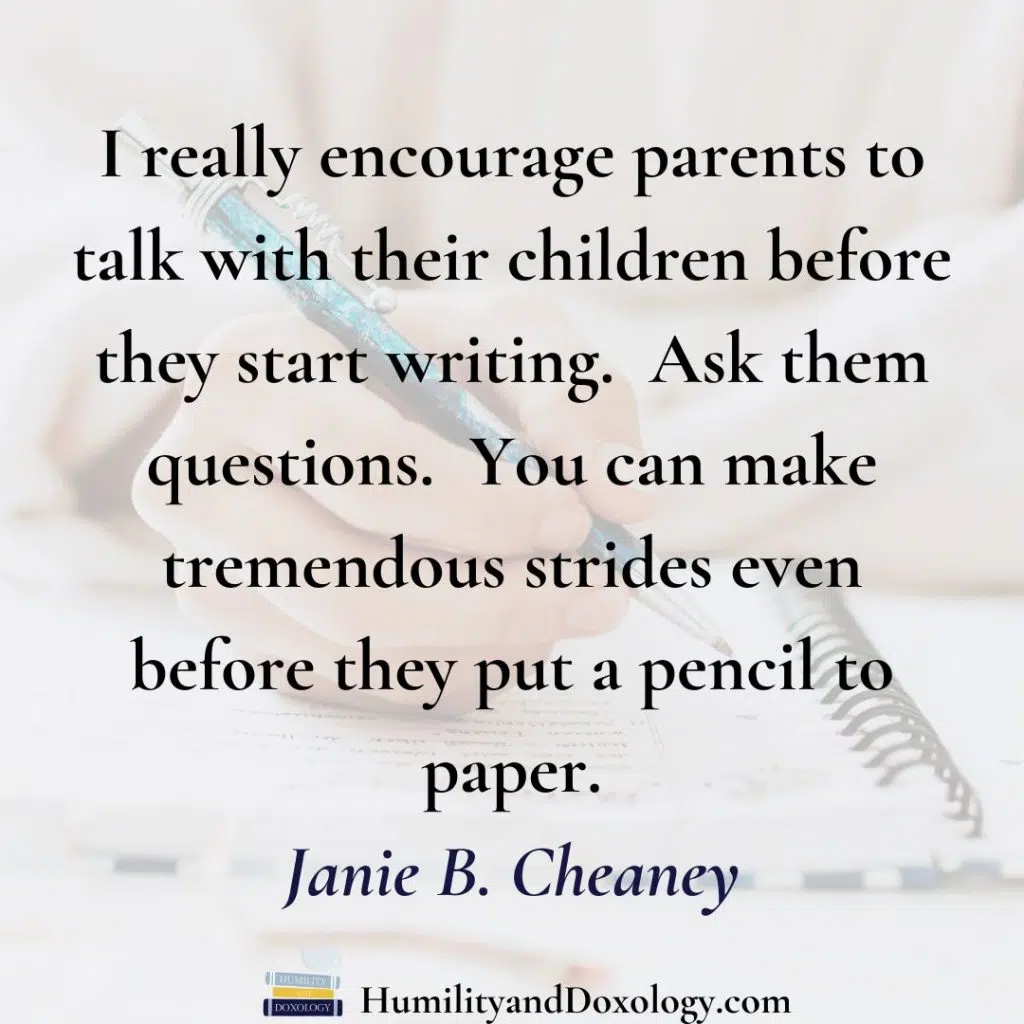
Homeschool High School Writing
Amy: Can I ask how we would then apply this in more the high school years? Because we’ve talked about the very early years, those late elementary, middle school where we give them a goal, a handful of guidelines. Do you recommend doing that same basic thing for high school as well?
Janie: By high school, they should have a pretty good sense of a good sentence structure, a good vocabulary. They have a lot of those things in mind. In high school, you need to be more structured, that’s when you start writing formal essays. I know that with some writing programs, the kids are writing three-point essays in second grade and I think that’s a little early. There’s plenty of time to get to that.
By high school, I’d say by sophomore year certainly, they need to be writing more structured essays, but again, you can start with your experience, make their descriptive essays longer and more structured. Their narrative essays, that’s when you tell a story or you relate to something that happened to you, that’s when they can start relating a story to a principle or a life lesson or something like that.
By sixth grade, the ages of 12 to 14, that’s when kids get more introspective, they’re starting to think about, who am I? Why am I here? Why doesn’t everybody like me? They get very self-conscious and I think that’s a good time to start this more introspective writing. I’m talking about in the Wordsmith which I will show you here. You’re getting the mirror image, I guess, but this is Wordsmith.
This is the middle-grade book and that’s where I really encourage them to start using their own experience to think about their place in the world and think about where they fit and all that kind of thing. That just gets more intensive in high school and also in high school, they’re starting to relate their own experience to the world that they live in. They’re writing more, they’re doing more research. They’re writing research papers, hopefully.
By sophomore year, they would have done at least one, it could be fairly short research paper. I’m talking about maybe eight pages where they have to do some research, they have to consult two or three or four sources and pull that information together in an expository paper. They’re getting more methodical, but they’re building on the skills that they learned in middle school hopefully.
I say that Wordsmith is about building confidence in writing and Wordsmith Craftsman, which is for the high school level is about building skills.
In middle grade, they become more confident about writing by using their own experience. In high school, they can take that expertise and apply it to more expository, persuasive, critical, different types of essays.

Amy: In my own experience, I currently have five children and they range from early elementary all the way up to my oldest is a senior in high school. What I have seen is if you can play with words in the early years and lay that good language foundation and you help them develop the ability to just communicate both orally and with writing. By the time they get to high school, they’re able to take–
My kids have taken classes from various writing teachers and know each writing teacher has a specific way they want you to format the essay or whatever they have, give you certain guidelines. Guidelines are actually pretty easy to learn and to follow. MLA versus AP versus I want you to do the essay structure this way or that way. If you already are able to communicate and that’s the hard part, you can learn the essay structure whenever you need to.
Janie: It’s the format. Yes.
Amy: Yes. I think sometimes we get it lopsided and focus so much on the format in the early years that it’s like, you’ve missed this beautiful window of time to just develop language skill.
Janie: Sometimes we forget what our goals are. Like public school teachers do, we teach to the test, so to speak, and we just forget what the whole point is.
Creative Writing in Our Homeschools
Amy: I want to ask about creative writing. This is something I have not taught formally in my homeschool, although, I have a daughter who’s done NaNoWriMo a few times. I have other children who have either dictated to me or written very lengthy fiction works themselves.
It’s certainly a part of our life although not formally, but I would love to hear, what did you think is the value of including maybe a little bit more formal or purposeful creative writing in our homeschool plan and how can we encourage maybe more reluctant writers who aren’t so sure about this creative stuff.

Janie: I like that word purposeful creative writing. As you say, some children just take naturally to this. They’re making up stories when they’re five years old, then they’re begging you to write them all down so they don’t forget them and others– I was like this. Like I said, I didn’t consider myself a story writer.
I could write perfectly good reports and more expository-type writing that the so-called creative was just not in my wheelhouse and I wasn’t interested in that. I think we had to rethink what we mean by creative. It’s not necessarily wild imagination. As I said in my Wordsmith book, I consider this a creative writing course. Even though I’m asking them to write from their own experience, we start out building vocabulary, especially focusing on nouns and verbs, make your nouns and verbs more strong.
Then we go on to sentence structure, how you can rearrange and rewrite sentences to make them stronger. Then we get to the assignments where you’re writing descriptions. For instance, you’re writing narratives and dialogue. I talk about point of view. I talk about focus and the very last assignment is to write a short story. To some kids, this is very scary because they’re good at starting, but they can’t finish or they just they can’t figure out a place to start.
With those, I reckon, even with the ones who are just wild about making up different worlds, fantasy worlds, and science fiction, and far-out fiction like that, you still need to ground it. You need to ground those things in the real world, or you won’t be able to relate to your readers.
The whole second half of Wordsmith is about writing. As I’ve talked about before, writing from experience, using lots of sensory details, using dialogue, using point of view and all those things, and then we take, I suggest taking a description of the gym, for instance, the gym where you practice basketball and use those same guidelines to describe a place you’ve never been.
You could use a picture for instance to get your ideas, or you could use the same guidelines to describe a planet. That’s the setting for your next science fiction story, for instance, or the world where you’re putting your elves and dwarfs. You use the same guidelines. You have to be grounded in actual solid experience to make your fiction believable.
For those who are not, so what they consider imaginative, and I believe that everybody is imaginative. Everybody has an imagination. We can all imagine things that are not right in front of us. We all have imaginations, but for those writers who feel more reluctant to do that, like to expand their experience, it helps to do the same thing.
You take the same guidelines and use them to describe a place never been. It could be a fantastic place that you just completely make up out of your head, or it could be a historical painting or a scene from a movie.
The same principles apply is what I’m saying across the board. By using the guidelines and grounding your writing in actual experience, you can both be more imaginative. You can encourage the imaginative ones to come down to Earth a little bit, and you can also encourage the more literal ones to take a few steps out of their actual experience and just try to imagine themselves somewhere else doing other things.
The final assignment as I said in Wordsmith is a short story. A short story has a plot. It has a structure. It has a particular formula that all stories follow up. I asked them to use something that happened to them and shape it into a story. They will start with something that they really did or something that they really experienced, and then they will make it a story.
They’ll have rising action and they’ll have a climax and they’ll have a falling action. It will have a story shape, but it will be based on their own experience. Once they ground the story in their own experience, then they can take it wherever they want, the story doesn’t have to end as real life did.
They can fly off in some other totally other direction. When you have something to start, when you have something to work with, it’s not so scary. I think a kid sitting down to a blank piece of paper is frightened. You’ve got so much you can work with. You don’t know where to start. Starting with experience helps both the imaginative and the more literal child to step out into more creative writing and I do think it’s important.
Amy: That is a really great tip. I hadn’t thought about how creative writing could start with something that’s in your own experience. That takes away the “I could write about anything.” That’s almost too much. I could write about anything is too scary. There’s too many options, it’d be hard to focus, but if you start with something that is your own experience, especially if you’re just learning, you’re a kid and you’re just learning how to express yourself this way, it gives you a jumping off point. It’s a safe place to then be creative and go all sorts of different directions I could imagine.
Janie: What if I hadn’t chickened out when my friend jumped off that cliff or when my friend took the dive off the rocks. Oh, yes. Go with it. What if you had.
Amy: What if you were scared at the top of the diving board, and then you jumped off and instead of going into the water, you went up into the air.
Janie: See, there you go. Gravity canceled.

The TOWER process for writers
Amy: Yes. Oh, man. On the Wordsmith site, you’ve brought up Wordsmith. That is your creative writing series. You mentioned the tower, T-O-W-E-R process for writers. Can you walk us through the steps and maybe give a few strategies for implementing them?
Janie: The Tower is just my acronym for the writing process. Every elementary school, middle school teacher tries to teach the writing process, and I just boiled it down to an acronym. You just think of the five stages as T-O-W-E-R.
T: Think
The first is T for think. You think about going to write before you try to just barge into it and start putting words down on paper. You need to think about it first, jot down some ideas, let your ideas lead to other ideas and just play with it a little while. That’s the thinking.
O: Organize
Then you need to organize. If you’re doing a formal essay, it would be good to write an outline, even just a simple informal outline will help you a lot.
If you’re writing a description, then you need to decide are you going to move from small objects to a large picture. Are you going to start with a large picture and move down to a smaller object? How are you going to do this? That’s the organizing part.
W: Write
Then the W of course stands for write. That’s when you write your first draft. For a lot of kids, the first draft is it. I wrote it, what else do you want?
Amy: Check that box.
Janie: There’s more to come. That’s only the middle. That’s only the middle of the process. The W is write to your first draft.
E: Evaluate
The E is evaluate, and I recommend that you– First of all, I recommend that all drafts be written in double space, even if you do it on a word processor, double space, and that doesn’t just give you more literal room to write in corrections.
It expands, it opens up. It opens up the manuscript in your own mind and you can see, hey, there’s room. It’s not this tight ball of words here. These words are spread out. I can move them around. I can do more with this. That’s the evaluation part.
In Wordsmith and in Wordsmith Craftsman, I provide guidelines for revising. Just questions that you need to ask yourself. That’s the evaluation part and it’s very important. Personally, I love doing revisions. The hard part is getting something on paper. Once I have something on paper, then I’ve got something I can work with. I like revisions a lot of kids don’t because they just don’t understand, but that’s part of the process.
Once that’s done and this is something that moms and teachers can help their students with because they’re going to need a little help to get started before it becomes second nature.
R: ReWrite
Once the evaluation is done, then you go to the R, which is for rewrite. That’s the part that just doesn’t seem fair to a lot of kids. It’s like, I wrote it. Why do I have to write it again?
Again, it’s just part of the process. All writers rewrite. Nobody writes it right the first time. It may be a little hard to learn, but in my case, like I said, I enjoy it. I think if someone is a real writer, they will learn to enjoy it too.
Amy: Yes. That “all writers rewrite” is right up there with “show your work” when you’re talking to your kids about math. There’s something that just they don’t want to do it but you keep at it. It’s like, no, this really is important. I promise.
What sets Wordsmith apart from other homeschool writing curriculums?
Janie, as you think about Wordsmith, and we’ve talked about that some today, what do you think sets it apart from other writing curriculums?
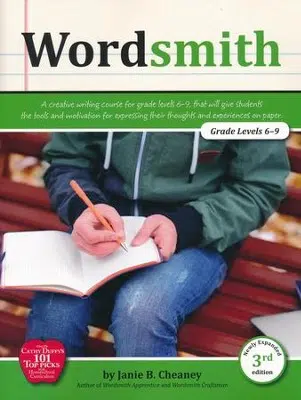
Janie: Number one, I think it’s fun. I wrote it to be fun. I address the students just one on one. Wordsmith is meant to be self-teaching. There is a teacher’s guide that goes along with it if you feel like you need a little more help, but I’m talking to the student as someone who has been there and understands that this is hard. It’s hard for me now. I am a professional writer.
This is what I do for a living, and it’s still hard, but the rewards are very great. I try to establish a common bond with them and then there are little lighthearted assignments and asides that could make you laugh. I think that’s one distinctive, a lot of writing programs are very fairly stale and formal and structured and just no-nonsense. It’s not that I go in for nonsense, but I do try to be a little more lighthearted and friendly with the whole thing.
Amy: I think when we–
Janie: Oh, so that’s– Go ahead.
Amy: I was just going to say, when we take ourselves too seriously, sometimes it makes us grumpy, and then we aren’t actually learning very much. It’s good to have a lighthearted approach to our learning but it’s part of humility, I think.
Janie: Yes. I would hope so. I also use a few little figures of speech when I’m explaining grammatical terms and things like that. It’s not as formal as a lot of programs.
The second difference I think is that I am a professional writer. Most of these programs are written by teachers and there’s certainly nothing wrong with that.
Teachers have plenty of experience with other students and they might include angles that I don’t, but as I am writing as someone who has experienced these same struggles and have managed to make a go of it, it’s not that everybody will become a professional writer but I think I have some insights on the process that maybe some teachers wouldn’t just that I’m coming at it from a different angle.
I say another difference is that it’s not comprehensive, but it is expandable. I think what I’m addressing are the most important principles of writing. In Wordsmith, the middle-grade book, I think what I’m giving them, as I said before, I’m trying to give them confidence in writing and the principles that they learn there, they can use in any writing. Even more expository structured writing, the principles are the same.
As such, it is not comprehensive but it is expandable. The assignments that they do in Wordsmith could be adapted over and over and over again. The principles are the same and the guidelines are roughly the same too. Number one, it’s fun. Number two, it’s written by a writer, not a teacher, and number three, it’s expandable.
In that sense, it’s economical because it’s just one book, but you can use the assignments over and over again and get a good, what I would consider a good basic writing education.
Amy: That is great. Well, thank you for sharing that with us. It was funny because I told my mom that I was going to be talking to you and she went digging around in some of her old boxes because she still has a lot of our old homeschool materials. Like many good homeschool moms, she had shelves full of all the curriculum she would pick up that looked cool at the time. We wouldn’t actually use all of it.
Janie: I remember.
Amy: Yes, but she had one of the old original copies of Wordsmith that white and black on the cover. She texted me a picture. She was like, “Look what I found.” I know this has been around and has been a blessing to many homeschool families for a while now. You have this new, pretty colorful cover.
Janie: Right.
What Janie is reading lately
Amy: Janie here at the end, I’m going to ask you the questions I’m asking all my guests and the first is just what are you personally reading lately.

Janie: Right. I love that question. I’ve been reading– Well, first of all, I write or I contribute to a website, a children’s book review website for Christian parents. It’s called Redeemed Readers. I read a lot of children’s books and probably the best one I read recently is called Alias Anna. It’s a Holocaust story. It’s about a Ukrainian girl. This is a true story.
It’s a Ukrainian girl who was a piano prodigy with her sister and they suffered under Stalin and then when the Nazis invaded that they had to run for their lives. She has quite a saga. It’s written in verse so that makes it– The format is a little different but for that reason, the emotional impact is sometimes greater.
In my adult reading, I just finished a book called Rescuing Socrates which is written by a–He was an immigrant from the Dominican Republic and he came to the states at the age of eight, I think, very poor. His parents were divorced. His mother was just scrambling to make a living in New York City. He ended up going to Columbia. He got a scholarship to Columbia and now he teaches at Columbia, he’s the director of the Columbia Core Curriculum.
I’m very interested in that because I think the University needs to return to some sort of Core Curriculum largely based on Western tradition.
He agrees with that too, but also broadening the curriculum a little bit to include other traditions and viewpoints. I just finished that. I found it very interesting and he has a very interesting story too.
Amy: Man, one of the problems with having this podcast is every time I talk to someone and ask this question, I get more books to read. My to-be-read stack is way too big already, but I’m going to have to add more now.
Janie’s best tips for helping the homeschool day run smoothly
The final question I have for you is, as you look back from this point of view, what are your best tips for helping the homeschool day run smoothly?
Janie: Oh, well, I think my biggest tip is try not to have too many expectations. I know this is very frustrating, especially for a lot of beginners. You’re trying to get in. You’re basically trying to replicate a school day with all the classes and reading all the pages, and getting through a certain number of math pages and so on. Most schools don’t even do that.
I would counsel beginning homeschool parents just watch their expectations. If you’re in it for the long haul, if you’re just educating or if you’re just homeschooling for a year, that’s one thing, but if you plan to keep homeschooling, just remind yourself, you have a lot of time to do this.
School is not confined to a certain number of hours a day. School is life, education is life. As you do this, as you get better at it, as you get more comfortable with it, you’ll find more ways to incorporate real education into just everyday life. As I said, at the beginning, when we finished homeschooling, I had no regrets. One of the things I liked best about homeschooling is that when my kids were teenagers, I felt like we were still friends, we had good conversations. That’s when they got to be fun. That’s when they got to be really interesting. I feel like I did not lose them during that time, and we were able to continue our relationship, and that was a great blessing to me. Just at the start of each day, give it to the Lord, do what you can, but don’t feel bad if you don’t get it all done. You’ve got a lot of time to do this.
Find Janie Cheaney Online
Amy: What a wonderful encouragement. Thank you. Where can people find you all around the internet?
Janie: Redeemedreader.com is where I do most of my writing now. I do blog on the Wordsmith website, it’s called wordsmithseries.com. Be sure that you put the series in wordsmithseries.com. I try to blog, or I try to add a blog twice a month. Don’t always make it. Those blogs are mostly on educational subjects, on writing better, improving your writing, maybe interesting books to read, even movie reviews sometimes.
I reviewed The Professor and the Madman. I think it’s the title instead of Mel gives a movie about the Oxford English dictionary that I just thought it really tied in with Wordsmith and what I was trying to do. You’ll come across things like that. Those are the two main websites that I write. As you mentioned earlier, I do write for World Magazine, so my column is on the world website also wng.org.
Amy: Wonderful, I will have links to all of those resources and the show notes for this episode at www.humilityanddoxology.com. Thank you so much for chatting with me today.
Janie: Well, thank you, Amy. I appreciated the invitation and it was fun.
Check out all the other interviews in my Homeschool Conversations series!
